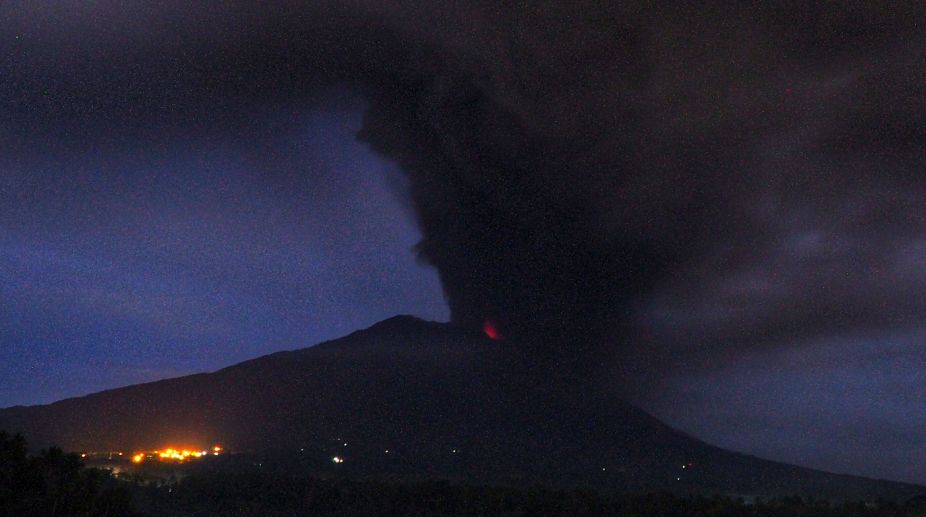Iceland volcano: Giant cracks in Earth as Iceland town continues to sink after hundreds of quakes
The Icelandic Met Office (IMO), has warned of "significant likelihood of a volcanic eruption in the coming days.

Representational Images (Photo: IANS)
Indonesian authorities on Tuesday extended the closure of Bali’s main airport over fears of an imminent major eruption of Mount Agung.
“The closure of I Gusti Ngurah Rai International Airport is extended. The airport is closed until Wednesday… Evaluations continue to be made by the airport authorities,” director of information for the Indonesian National Disaster Management Agency (BNPB), Sutopo Purwo Nugroho, said in a statement.
Advertisement
ALSO READ: Indonesia issues highest flight warning as Mt. Agung erupts
Advertisement
Nugroho also noted that Agung continues to erupt and spew water vapour and ash between 2,000 and 3,400 metres high above the crater, in addition to the seismic activity in the area, reports Efe news.
A report from the local aviation authority indicated that “the plane routes have been covered by volcanic ash”, which could affect the engines of the aircraft and cause an accident.
The airport on Monday cancelled 445 domestic and international flights, leaving at least 59,000 passengers stranded.
The Indonesian authorities reported on Monday that they planned to evacuate between 90,000 and 100,000 people living in a safety radius of 10 km around Mount Agung, after the Centre for Volcanology and Geological Hazard Mitigation (CVGHM) raised the eruption alert to the highest level.
At least 22 towns near the mountain have been affected by the ash, and the authorities have recommended the use of protective masks for the population.
Located in the east of the island, in the district of Karangasem, Mount Agung is far from most tourist attractions.
This is Mount Agung’s first volcanic eruption since 1963, when the ejection of magma lasted almost a year and caused more than 1,100 deaths.
Bali is the main tourist destination in Indonesia, with an annual influx of around 5.4 million foreign tourists, according to official data.
Since September 22, the Agung eruption alert has cost the Balinese tourist industry 20 trillion Indonesian rupiah ($1.47 billion), according to Nugroho.
The Indonesian archipelago sits within the so-called “Ring of Fire” of the Pacific, an area of great seismic and volcanic activity that is shaken by thousands of tremors every year, most of small magnitude.
Advertisement